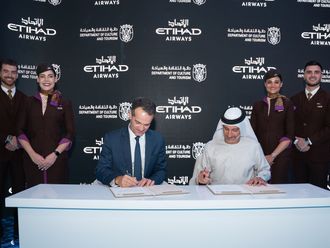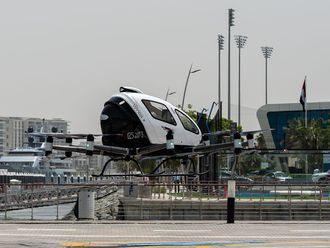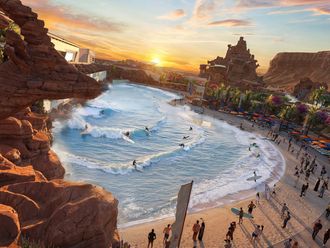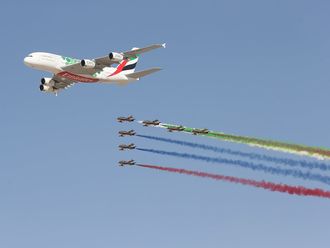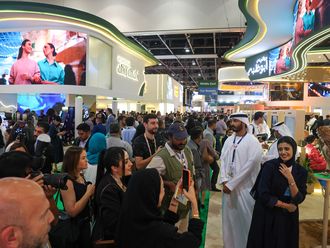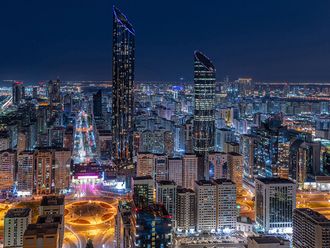
DUBAI: Rapid growth in Ras Al Khaimah’s international tourism sector is inhibiting short-term growth in its domestic market, said Haitham Mattar, CEO of Ras Al Khaimah Tourism Development Authority (RAKTDA).
About 40 per cent of Ras Al Khaimah’s 740,000 hotel annual visit are from within the UAE, primarily at weekends and public holidays, he said.
The emirate currently has 3,600 hotel rooms, and its occupancy rate has risen to 71 per cent.
It is targeting a million visitors by 2018, by when it will need an additional 4,000 rooms, and 3 million visitors by 2025, when Mattar estimates it will need an additional 20,000 to 25,000 rooms.
It has added 382 rooms this year.
Although tourism is a small contributor to Ras Al Khaimah’s GDP, accounting for only around 3 per cent of overall GDP, RAKTDA is seeking to grow its contribution by 10 per cent per annum.
Overall visitor numbers are currently growing by 7.2 per cent year-on-year, primarily driven by the international market. “This is higher than the global average of 4 per cent,” he added, “and the regional average is about 3.2 per cent.”
But rapid international growth — a 45 per cent increase in visitors from Europe, for example — meant fewer visitors within the UAE could stay. “At the moment our growth in demand is much higher than in supply, and we are obviously very keen to talk to investors and look at opportunities to build in Ras Al Khaimah,” he said.
Mattar explained the problem: “Take the Brits, for example. Brits book well in advance and pay well in advance, whereas your local market books on Wednesday for Thursday or Thursday for Friday. By then, guess what, the international market is here and they’ve occupied the space.
“The decline in the domestic market is pretty much related to availability, and we are working very closely with developers and encouraging more investors to look at building hotel rooms because the demand for the domestic market can continue to grow should we have enough space.”
The emirate currently has a further 3,600 rooms in design or development — nearly enough for its 2018 target.
GCC visitors represented only about 8 per cent of business, often attracted by Dubai/Ras Al Khaimah combination packages, but the number of visitors was growing at 55 per cent annually, “predominantly driven by Oman and Saudi Arabia,” said Mattar. “We’ve seen also a fantastic growth from Bahrain, albeit again from small numbers.”
The visitor figures Mattar quoted only represented hotel stays. Although he estimated the emirate also has thousands of day visitors at weekends, he could not give a more precise number. “We unfortunately have not installed the technology to measure day-trippers. We’re in discussion with the likes of Etisalat and du and some of the government sectors in Ras Al Khaimah to find the best way to measure this, because we just don’t want to go with assumptions.”
RAKTDA has opened international offices in the UK, Russia, Germany and India to help boost international visitor numbers.
The attractions of Ras Al Khaimah
In its bid to expand its tourism industry, Ras Al Khaimah is emphasising its potential as an adventure and heritage destination.
At the Arabian Hotels Investment Conference in Dubai last April, delegates heard the emirate likened to the French Riviera’s Saint Tropez.
But that’s not a comparison RAKTDA CEO Haitham Mattar is fond of.
“Ras Al Khaimah has a unique identity,” he said in an interview with Gulf News on Tuesday.
“It’s got a unique differentiation to the rest of the emirates, and it complements exactly what Dubai and Abu Dhabi and the others have to offer. We sell a lot of packages that are Dubai and Ras Al Khaimah for example.”
Ras Al Khaimah is seeking to promote itself as a sports and adventure destination, backed with cultural and heritage attractions, and make use of natural assets such as its mountains and mangroves.
“We’ve got the highest mountains in the UAE — Jebel Jais 1,900m high with temperatures that are 10 degrees below the coast,” Mattar said.
“We’ve started to introduce a number of sports activities, adventurous activities on the mountain, including the Via Ferrata, which is a natural climbing ground with three zip lines and rope bridges that allow you to cross between sides of the mountain. This will launch towards the end of October.
“We’ve hosted a number of events such as the RAK Marathon, the North Face Run. We had the GCC Hiking Championship. We are now hosting the first European Golf Challenge in Ras Al Khaimah.”
An extra advantage, he said, was the proximity of adventure sites to each other.
“If you’re looking for adventure you could do zip-lining in the mountains, diving in the sea and a desert safari all in one weekend, and there’s not many places in the world you can do that.
“Of course, you also have our mangroves, where you can do kayaking, and you can see turtles in their natural habitat and you can see flamingoes. It’s a very beautiful experience.”
Furthermore, Mattar said, Ras Al Khaimah is rich in historical sites. “We have sites that date back 7,000 years.”
The emirate is currently restoring the old pearling village of Al Jazeera Al Hamra, with around 450 units of old watchtowers, mosques, souqs and coral houses.
“The restoration process started about eight months ago and it’s going to be in three phases,” Mattar said. “We’ve worked with PWC, commissioned them to start works on how we mobilise this as a tourist destination — what it will look like, what it will have in it and how we keep it alive, so it’s not restored and [just] sitting there.”



